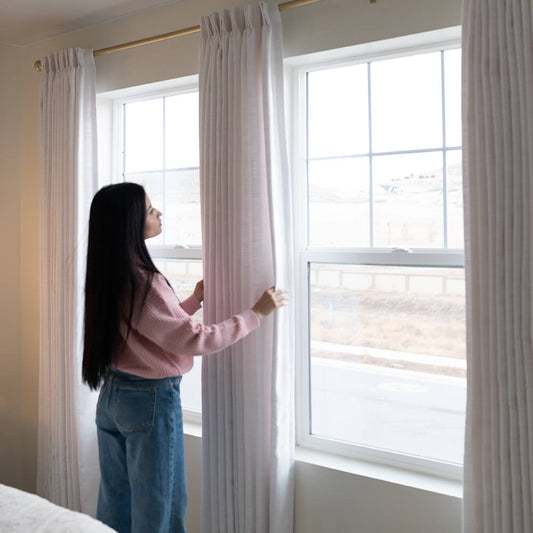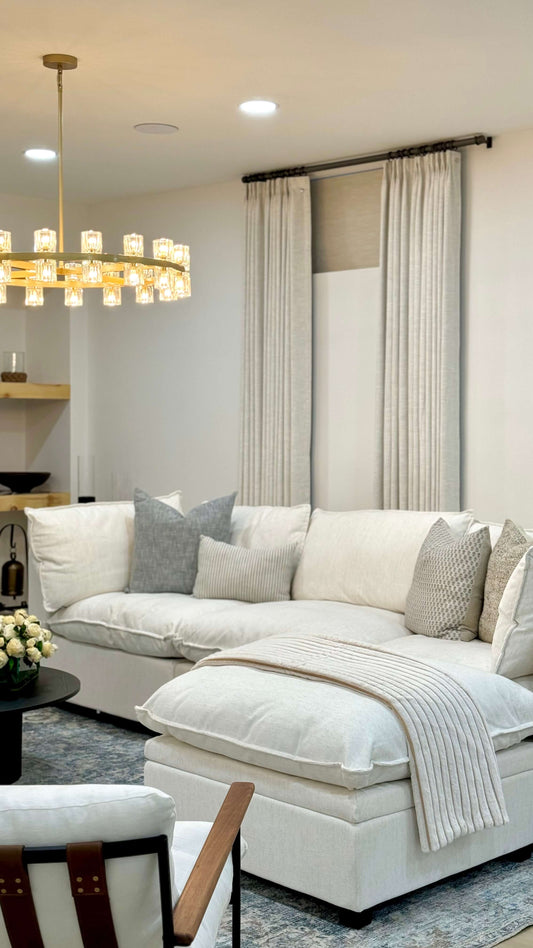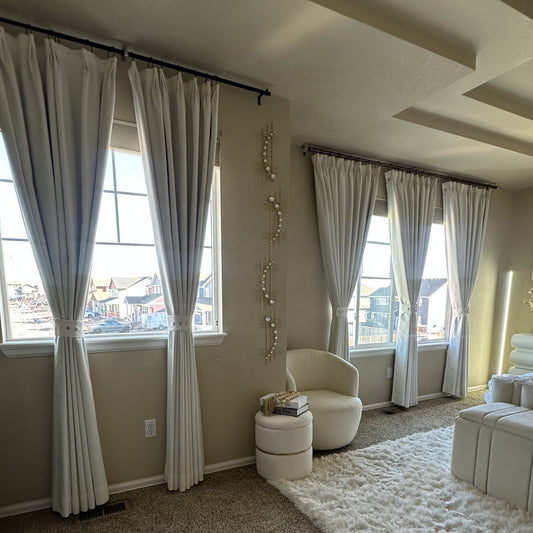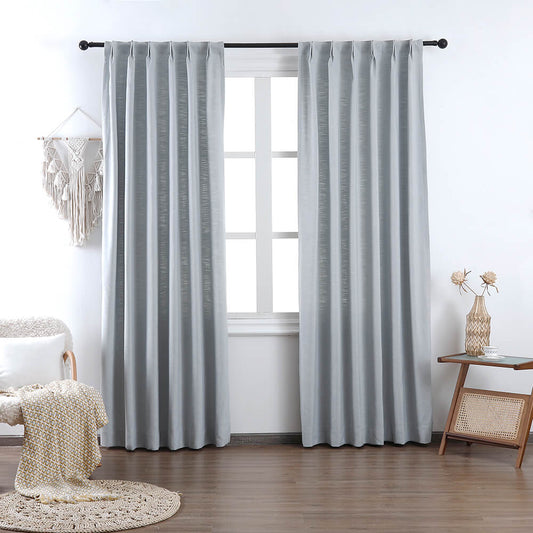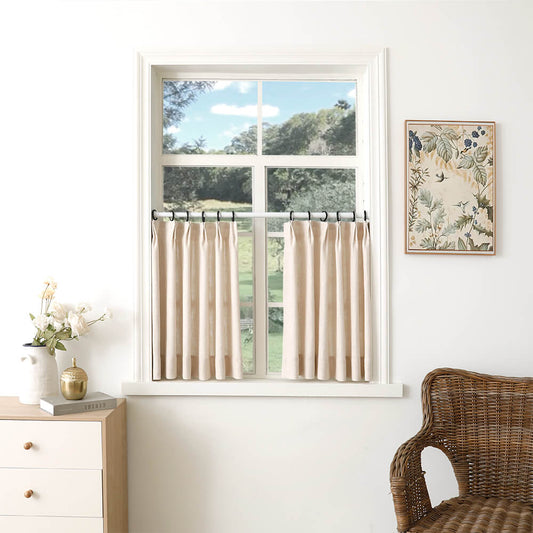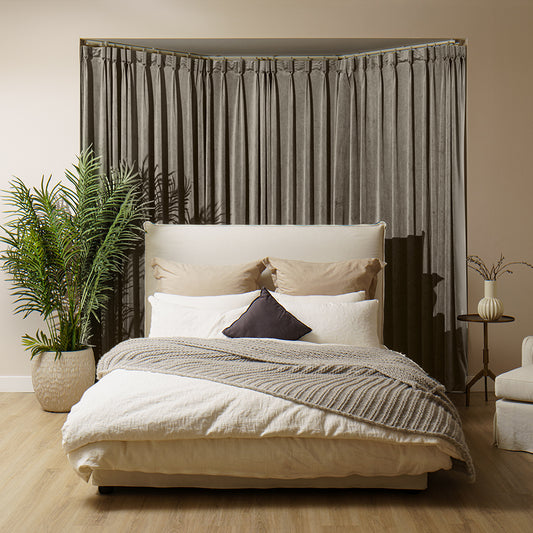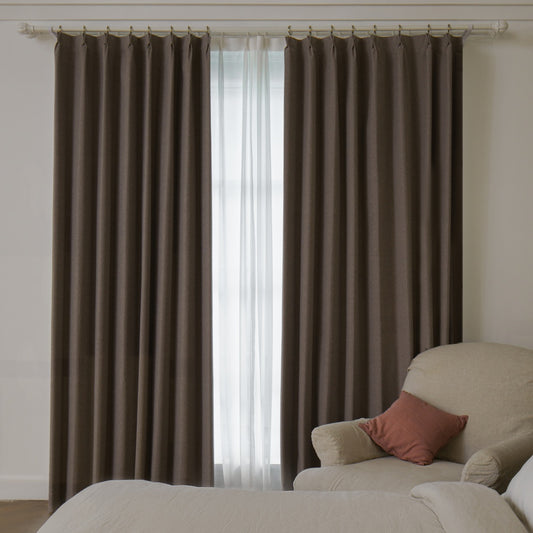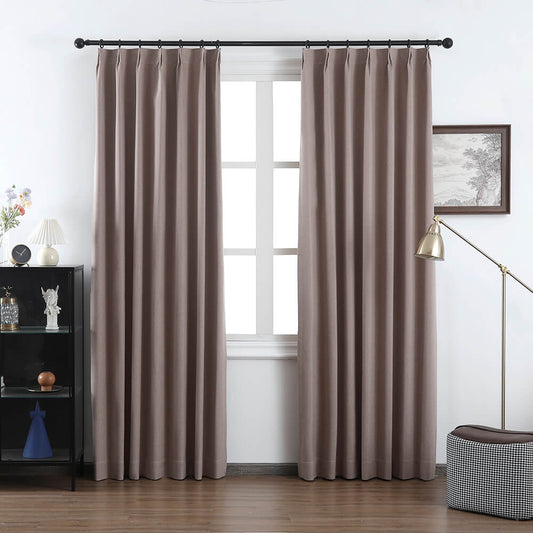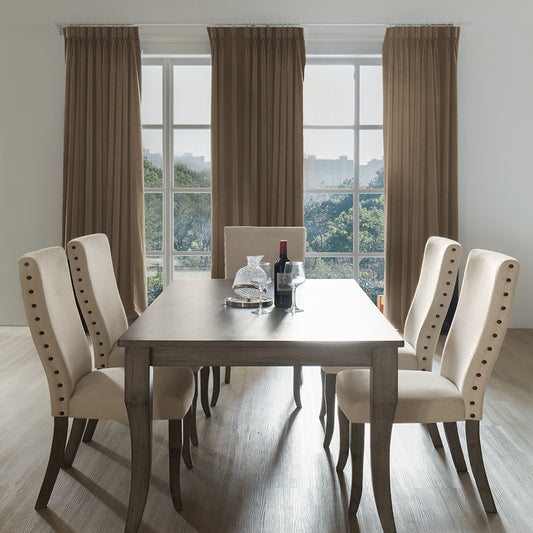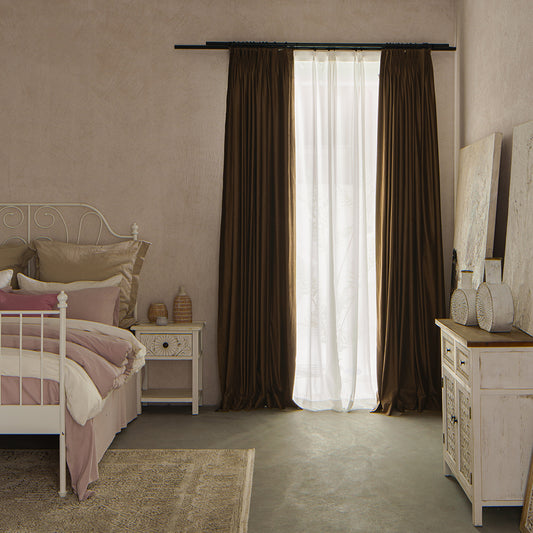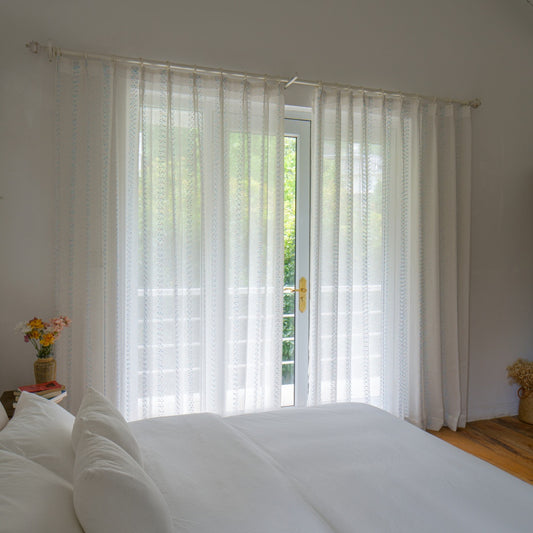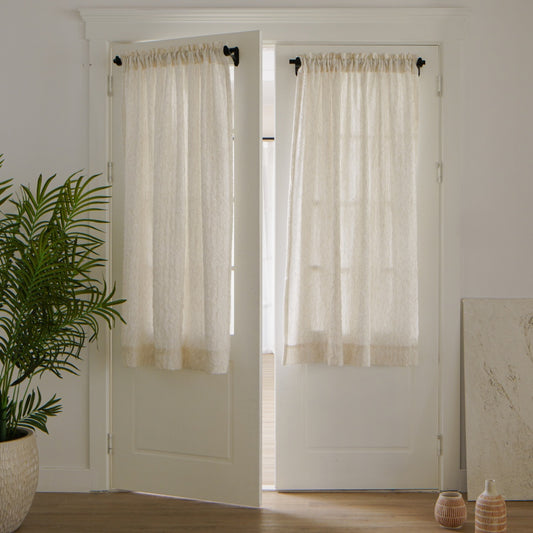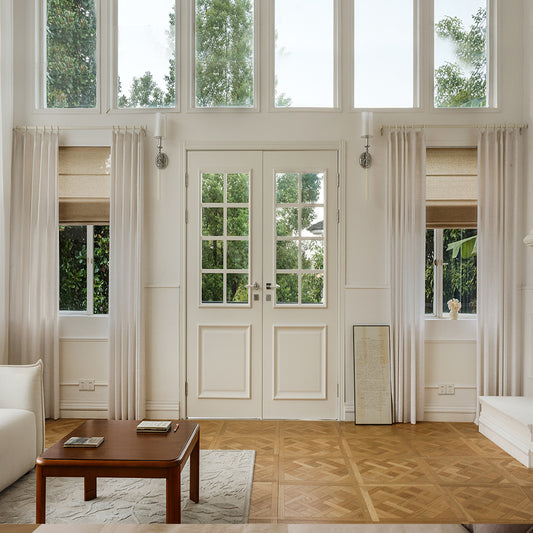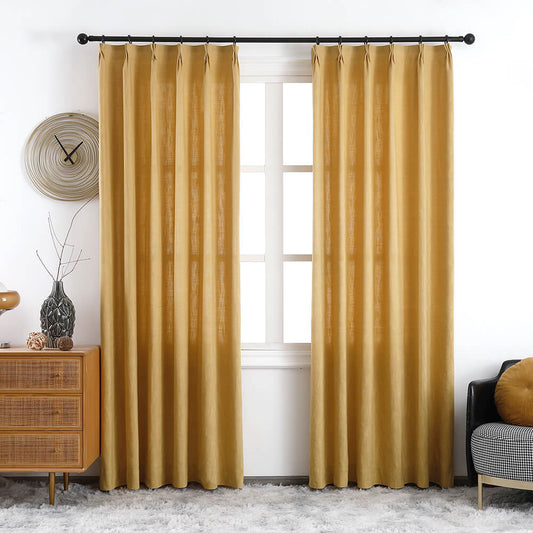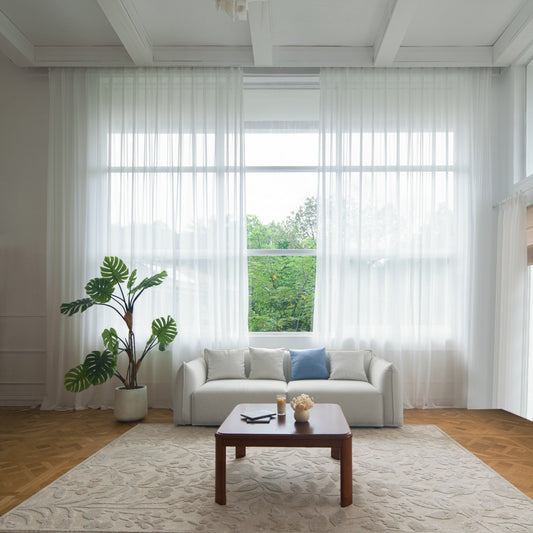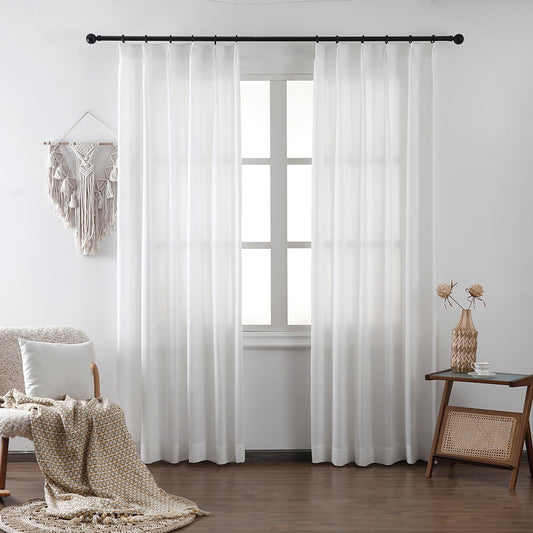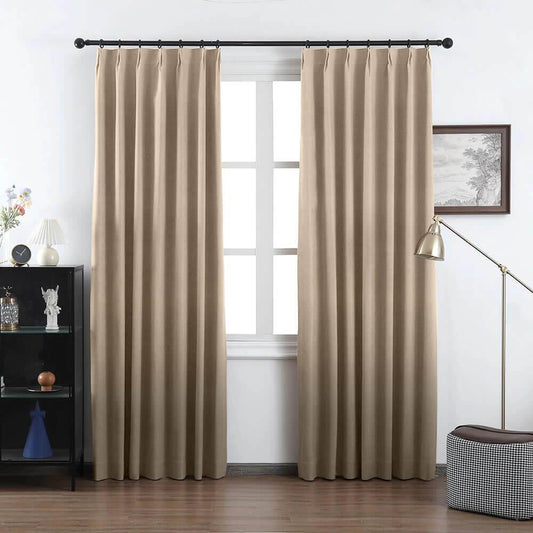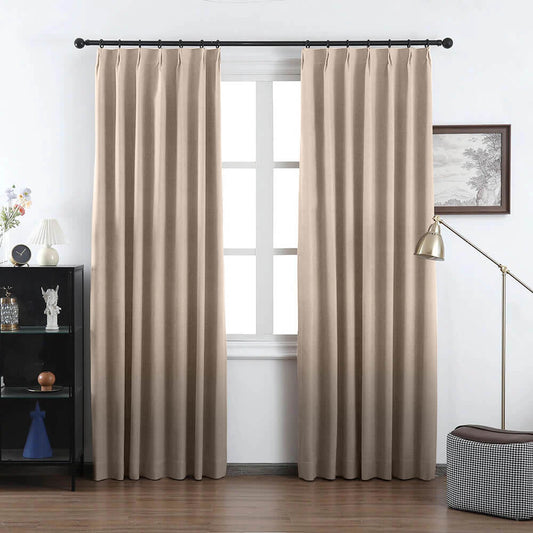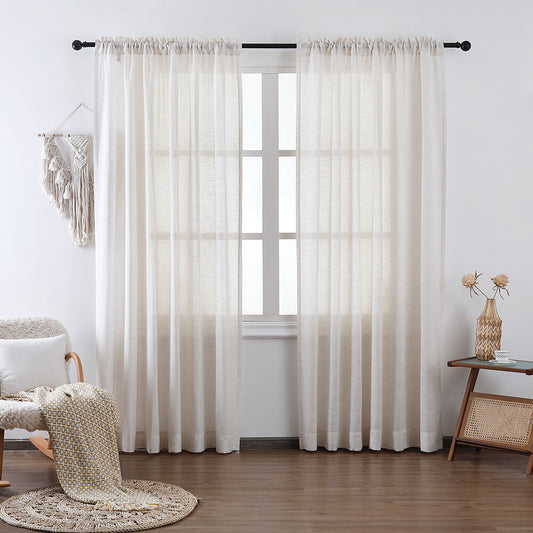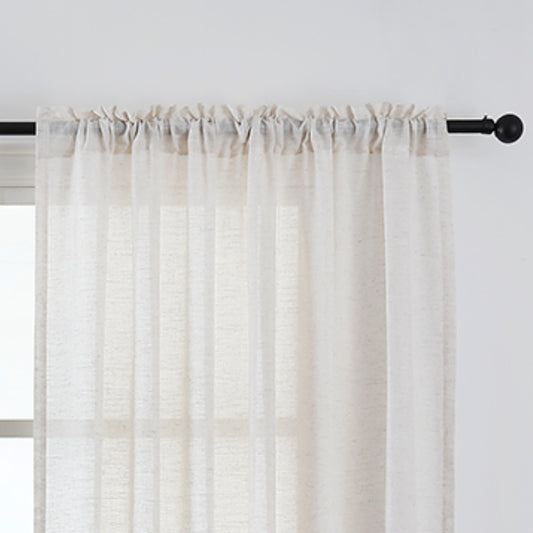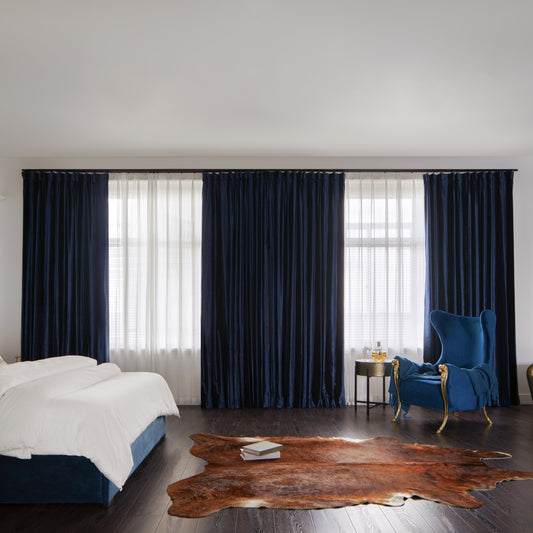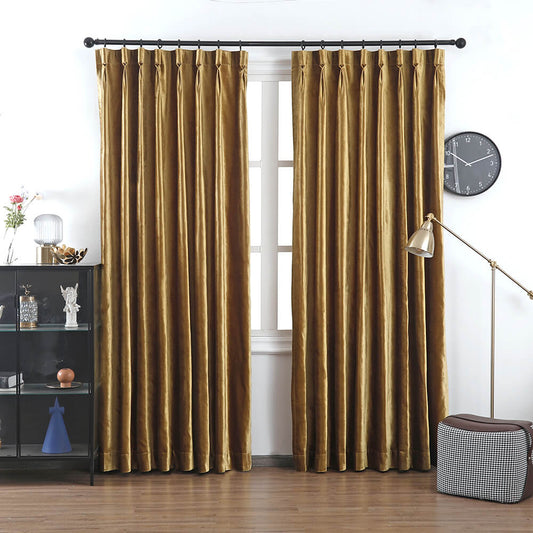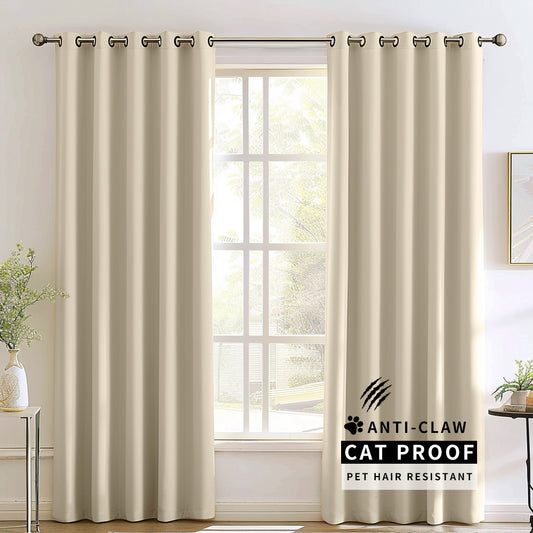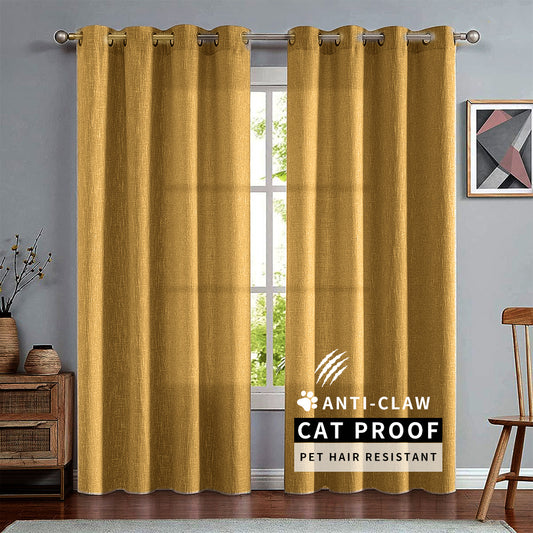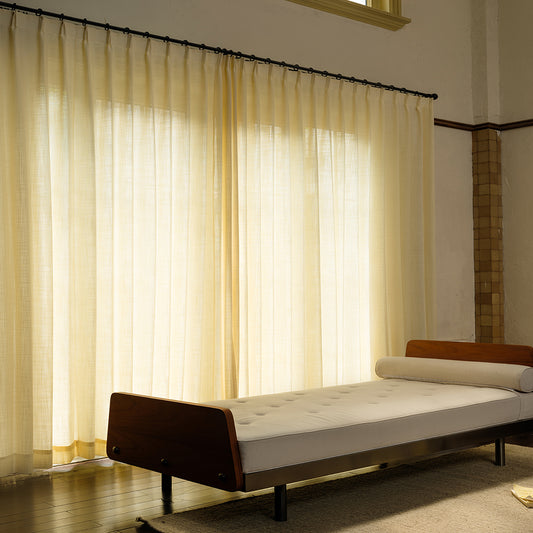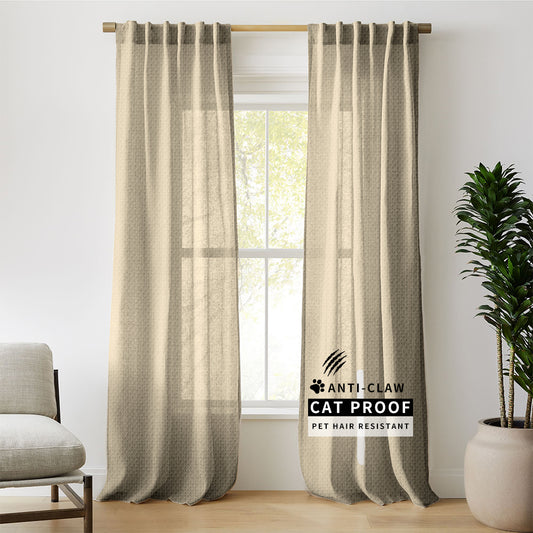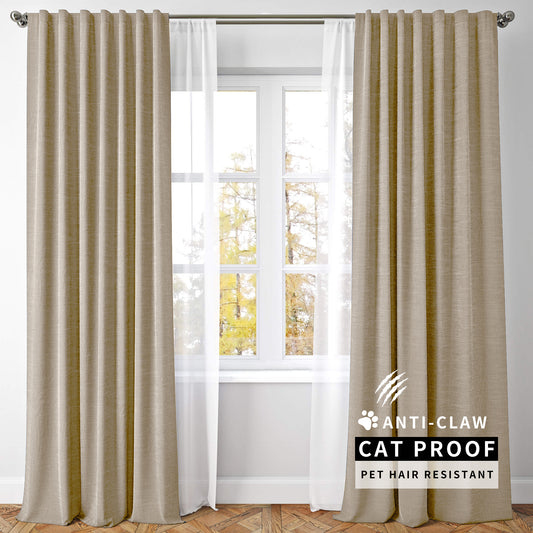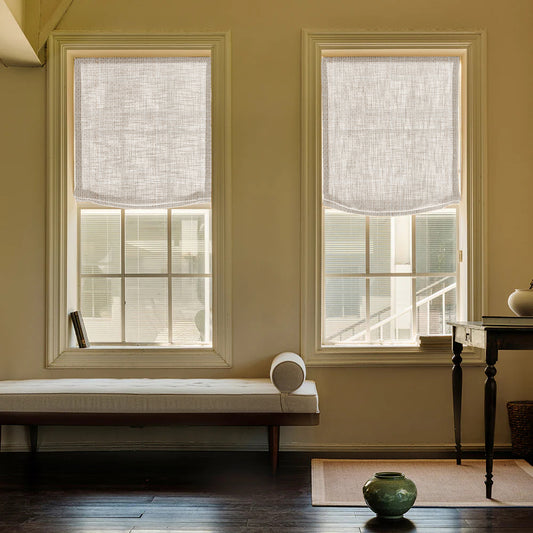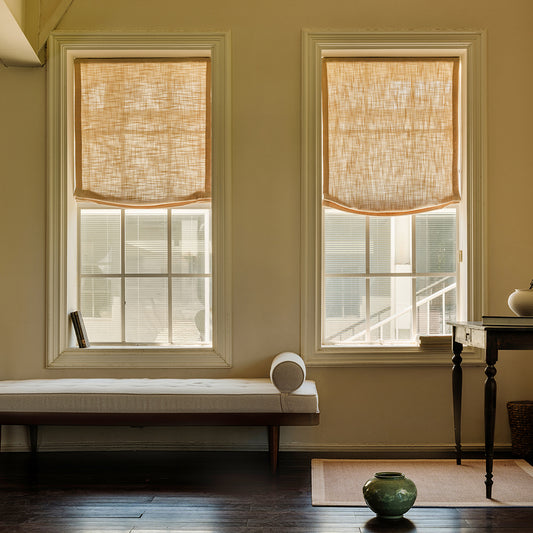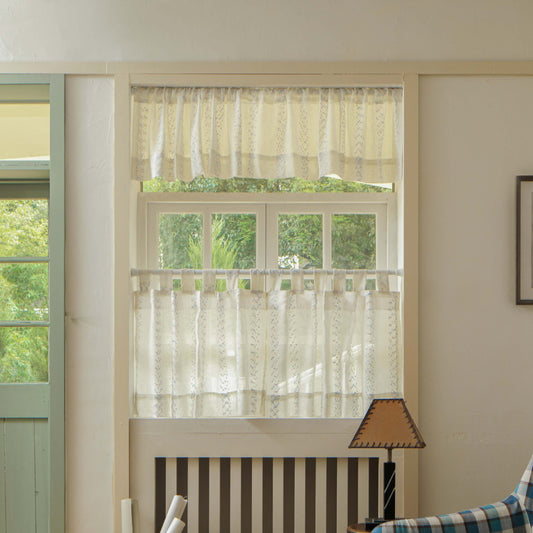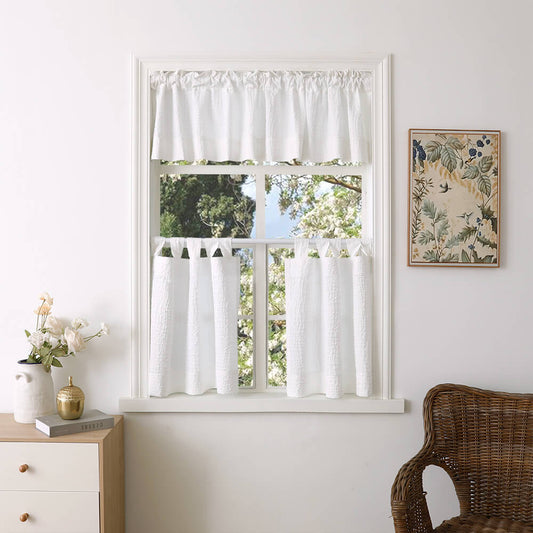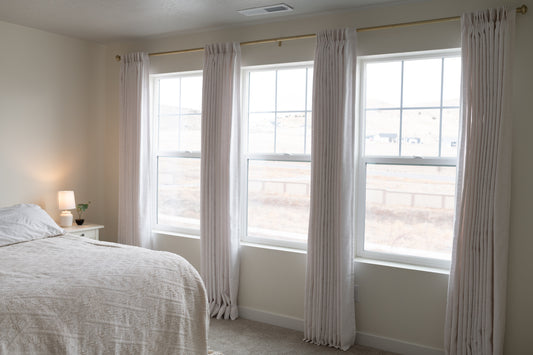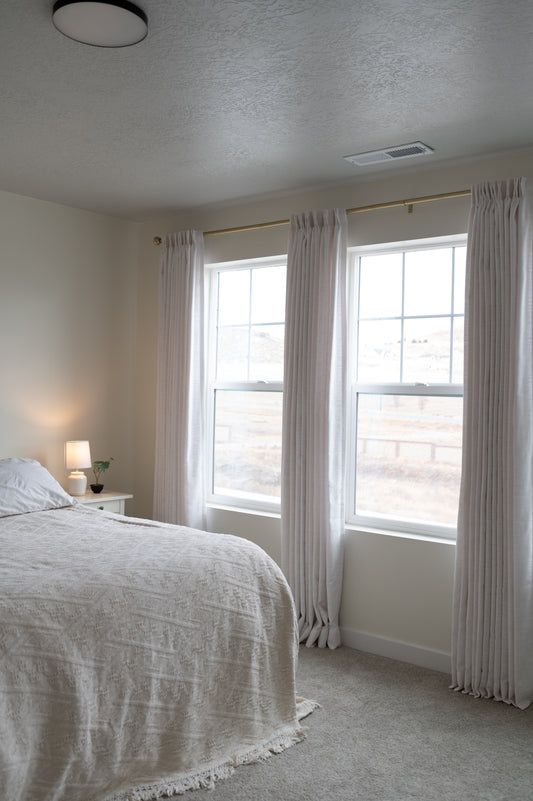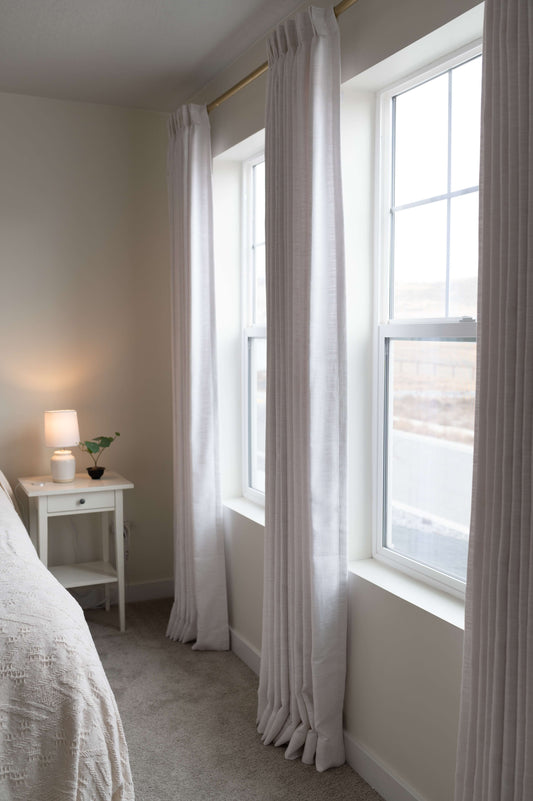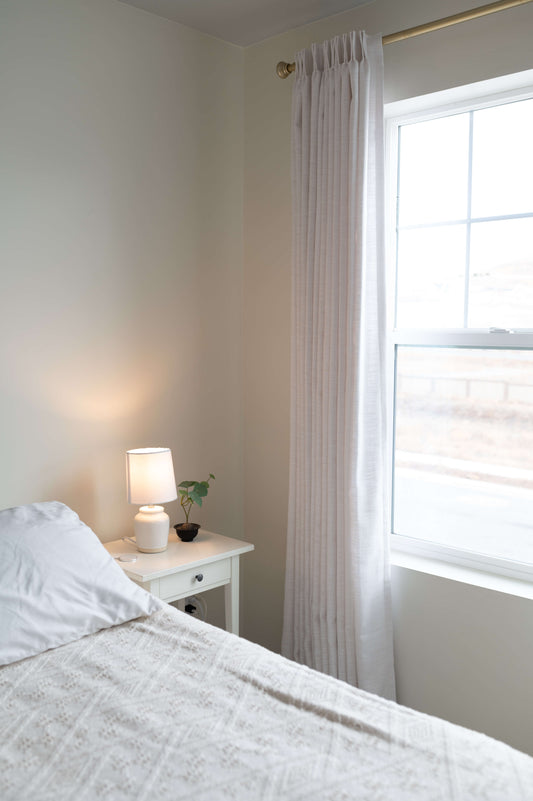Curtains vs. Blinds: Which Is the Better Choice for Commercial Properties?
Selecting the correct window treatment will greatly affect the general atmosphere, use, and comfort of the room when it comes to furnish commercial buildings. Blinds and curtains rank two among the most often used choices. Both offer certain benefits; knowing their distinctions will enable distributors, interior designers, and business owners to choose the best course of action for their particular needs.
In the framework of commercial environments, this essay will contrast curtains and blinds stressing their advantages and disadvantages. By the time this tutorial ends, you will know which choice fits various kinds of business properties more precisely. This guide will offer insightful analysis regardless of your position—commercial space designer, curtain distributor, business owner wishing to make window treatment investments.

The Fundamentals: Blinds vs. Curtains
Describes curtains.
Usually constructed of fabric, curtains are soft window coverings. Available in a range of materials, colors, patterns, and textures, they can be customized to suit the size and form of any window. Usually placed on rods, curtains can be opened or closed depending on the intended degree of light and seclusion. They can bring a room more warmth and luxury and present a more conventional look.
What are blinds?
Conversely, blinds are hard window coverings composed of a variety of materials, such wood, metal, or vinyl. These are horizontal or vertical slats that one can change to regulate privacy, heat, and light. Blinds are often more modern and minimalist in style, delivering a sleek, clean look to commercial establishments. Depending on the type of blinds, they can be manually operated or come with motorized options for convenience.

Curtains: The Advantages for Commercial Properties
1. Aesthetic Appeal and Versatility
The great aesthetic appeal of curtains is one of the key factors influencing their popularity in commercial environments. From opulent velvet to light and airy linens, curtains come in a great variety in colors, textures, and patterns. Their adaptability lets them fit any type of business property—office, retail shop, hotel, or else. Curtains may accentuate the décor and create a cozy, friendly space.

For homes where style is everything, curtains enable more design freedom and could accentuate or match the general concept of the room. Custom curtains guarantee a flawless fit for any interior style and fit certain windows.
2. Enhanced Privacy and Sound Absersion
Curtains are naturally good at providing insulation, particularly against noise. In busy commercial locations where distractions can affect productivity, curtains can assist minimize the amount of sound entering the space. This is especially beneficial for workplaces or conference spaces where privacy and confidentiality are crucial.
Moreover, curtains help to provide seclusion in areas that could be open to the outside or another room. They give more control over the mood of the room by acting as a visual barrier shielding it from curious eyes.
3. Energy Consumption Efficiency
Many owners of commercial properties give great weight to energy economy. Particularly those produced from thermal or blackout textiles, curtains can greatly help to save energy. By blocking summer heat and keeping warmth during the winter, they assist to control indoor temperature. This lessens the demand for heating and air conditioning, so saving energy and supporting a more environmentally friendly corporate operations.
Blinds: Benefits for Commercial Landlords
1. Great Flexibility and Control of Light
The main benefit of blinds is their great light control capacity. Unlike curtains, which are either open or closed, blinds can be changed to let just the required level of light. For commercial settings including offices, conference rooms, or retail locations where the lighting needs to be adjusted throughout the day, they are therefore perfect.
Easy tilting, raising, or lowering of blinds lets one maximize control over the ambiance of the space. In offices where employees might have to change lighting to reduce glare on screens or create a more concentrated surroundings, this function is especially helpful.
2. Low Maintenance Modern Approach
Modern, slimline blinds fit very nicely in modern commercial environments. Whether it's a trendy cafe, an ultra-modern office building, or a chic boutique, blinds provide a simple, understated design that accentuates modern sensibilitiesation.
Blinds also are simpler to maintain than curtains. Most blinds may be cleaned with a cloth or dusted with a vacuum attachment. For heavy traffic business areas where cleanliness is crucial and regular washing of fabric curtains may not be suitable, they are therefore a sensible choice.

3. Longevity and Long-Lasting Performance
Blinds, particularly those made from materials such as aluminum, vinyl, or wood, are extremely durable and long-lasting. They are less prone to wear and tear compared to cloth curtains, which may fade, discolor, or get damaged more readily. This durability makes blinds a wise investment for commercial spaces, especially in environments where the window treatments will experience heavy use.
Examining Blinds and Curtains: Considerations
1. Affordability Issues
Because of the materials and customizing needed, curtains typically have a greater upfront cost. Still, curtains—especially those with thermal and soundproofing qualities—can be a good investment over long terms.
Originally more reasonably priced, blinds can get more costly depending on the material and mechanism—that is, motorized choices. Because blinds demand less frequent cleaning or repair than curtains, their maintenance expenses are typically less.
2. Space Complementarity and Style
Larger windows or areas needing a dramatic, opulent impression call for curtains. In places like hotels, restaurants, or conference rooms—where comfort and style are crucial—they perform nicely. On smaller, more modern offices or commercial buildings, however, blinds might be a better fit and provide a sleeker, less heavy answer.
3. Installation and Maintenance:
Installing blinds can be somewhat simple, especially for standard-sized windows; bigger windows or motorised versions could call for professional installation. There is little maintenance; it consists mostly in occasional cleaning and dusting.
On the other hand, installing curtains may be slightly more involved, especially when dealing with heavy fabrics or custom designs. Curtains also require regular washing and may need to be replaced more frequently due to wear and tear.
Conclusion: Which is the Better Choice for Commercial Properties?
When picking between curtains and blinds for commercial premises, the choice ultimately depends on the individual needs of the location. For residences that prioritize aesthetics, warmth, and noise reduction, curtains are a good solution. They improve privacy, bring sophistication, and help to maximize energy economy.
Blinds might be the best choice, though, for homes wanting a modern, low-maintenance solution or for those needing more control over light and privacy. For businesses or environments that must keep a neat, simple look, blinds are especially appropriate.
Before deciding, it's crucial to evaluate the unique needs of every commercial space including design preferences, functional requirements, and budget.
1. In the same commercial space might I use blinds and curtains?
Exactly! Combining blinds and curtains can get the best of both worlds. For exact light control, for instance, you may choose blinds and then combine them with drapes for further privacy and insulation. In places like conference rooms or big offices where variable light management is needed, this mix performs very nicely.
2. For my commercial property, which window treatment would be best?
Think about the utility you need—light control, privacy, and insulation among other things. Furthermore considered should be the general look of your business area and how the window treatment will improve the ambiance. If you're not sure, seeing a professional window treatment specialist or interior designer will assist you to decide with knowledge.
3. Would commercial buildings be better off with automated blinds?
For business environments where advanced technology and simplicity of usage are sought, motorized blinds are an excellent option. Particularly helpful in bigger areas or buildings with hard-to-reach windows, they let users remotely operate blinds.
4. How can I make sure my window treatments maximize energy economy?
Search for drapes or blinds with thermal or blackout qualities to help control the internal space temperature. To stop heat loss or gain, also ensure the window curtains cover the whole window. For blinds, use insulated vinyl or wood, two energy-efficient materials.
5. How might I keep my blinds or drapes in place?
Depending on the fabric, curtains need to be routinely cleaned—by washing or by dry cleaning. To keep blinds appearing clean and fresh, they should be occasionally cleaning or wiping. To guarantee the lifetime of your window treatments, always follow manufacturer care recommendations.
